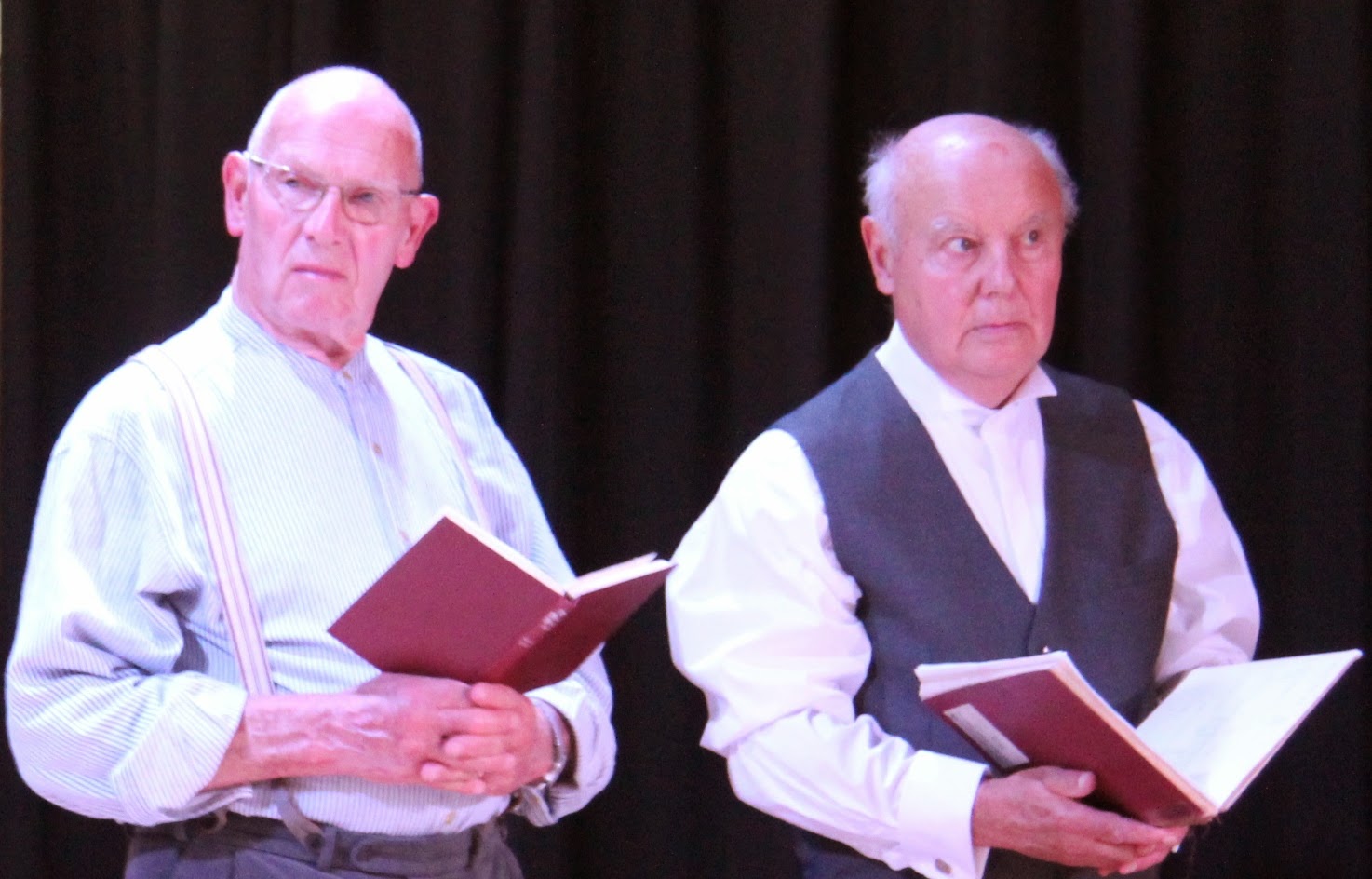Eighty years since opening of Silsden's park -- 'the largest voluntary scheme in the country'
Silsden Playing Fields
opened on September 29, 1934, at a total cost of £12,560. Described at the time
as the largest voluntary park scheme in the country, the Playing Fields were opened
by the Princess Royal. Hers was the first visit to Silsden by a member of the
royal family.
Above: the opening ceremony took place in torrential rain. The Princess Royal is pictured with local textile manufacturer Richard Fletcher, who was the driving force behind the project.
Above: Mr Fletcher cuts the first sod of the new recreation ground in February 1934 watched by local schoolchildren. On the right is Mr L. A. Claughton, head master of Hothfield Street School.
Above: Mr Fletcher, a West Riding county councillor, who was chairman of Silsden Education Committee and of Silsden Playing Fields Association, told the gathering that every contract for the park had been placed in the town to help alleviate unemployment, which was rife at the time.
Above: this rather faded photograph shows Mr Fletcher and Aire View School head Miss Eva Smith, who took all her pupils to the cutting of the first sod. They are pictured at the park gates. The little girl holding Mr Fletcher's hand is Mary Cockshott. Several of today's older residents who still use the park attended the opening ceremonies.

Above: Mr Fletcher and dignitaries at the ceremony to launch the park development.
Above: the park originally included a bandstand, sited near the pavilion, the gable end of which can be seen on the left soon after the playing fields opened. The present slope and rugby pitch were created in the late 1950s.

Above: the slides, swings and other play equipment for children have been handsomely modernised. Credit is due to Silsden Town Youth Council, which in 2009 secured funding of £70,000 for a new-look activity area.
Above: the rocks and ramps skateboarding facility was instigated in 2005 by the Youth Council.
Above: the rocks and ramps area was originally a paddling pool overlooked by a shelter.
Above: Eric Inman (left) and Bob Taylor are among several locals who have been bowling at the park for 50 years or more. Eric, 87, remembers the park being opened. He and Bob are sat on one of the two seats presented to the town by the Princess Royal when she opened the park.
Above: George Arthur Bracewell (nearest camera), 87, is a prominent player and has the distinction of winning the Leeds, Craven and Wharfedale merit competitions. Next to him is Hugh Gallagher, also in his 80s, whose bowling career was cut short by a road accident a couple of years ago.
Above: a traditional summer scene. The park is home to the Silsden Playing Fields Bowling Club, one of two in the town (Silsden Bowling Club plays at a green at the sports fields in Keighley Road). This picture was taken during a friendly game against Ilkley.
Above: in the days when shorts were only worn by schoolchildren.
Above: the club house provides bowlers with light refreshments. The social element of the game is pre-eminent.
Above: Now boarded up and,
sadly, unused, the park pavilion once upon a time offered afternoon teas in
summer.
Above: the summer opening of the park pavilion was a noted annual social occasion attended by local dignitaries. The well-hatted women in the foreground of this 1960s photograph include Mrs Wolmersizer (second from left), Mrs Heaton (fifth from left) and Mrs Sarah Cairns (sixth from left). Behind them in the red hat is Mrs Smithies. The bow-tied gentleman on the steps is Steve Walbank, chairman of the Old Age Pensioners Association, which organised the teas. Next to Mr Walbank is Arthur Watson, chairman of the old Urban District Council and chairman of the Old People's Welfare, which later ran the teas. Servings ceased in the 1970s. Behind them are district nurse Councillor Catherine Herbert and, partly hidden, Councillor Nellie Fortune. Councillor Bertram Mole and his wife are to the right next to Mrs Smithies.
Above: the tennis courts in the early days. The buildings, left to right, are the toilets, pavilion and bandstand.
Above: the tennis courts today.
Above: the bandstand was dedicated to Edward Newton, a nationally-known composer and conductor of Silsden Brass Band for many years. He died in 1914.
Above: the last full-time park-keeper was Alan Johnson, who was at Silsden for 14 years before taking charge of Bradford council's Keighley district parks, including Silsden, for 21 years and then retiring. He lives at the keeper's bungalow, which is a floral treat each season. Alan still plants up the hanging baskets.
Above: the park keeper's bungalow, called Priceholm, opened in 1935. It is named after Sir Henry Price and his wife, who gave the £700 for the bungalow to be built. Sir Henry founded the Fifty Shilling Tailors chain of clothing shops and became a millionaire. He moved to Silsden in 1901 and his empire started here with a shop in Bridge Street. He soon moved to Kirkgate in premises now occupied by the Chinese take-away. He went on to own 400 retail shops selling garments made in his own Leeds factories from cloth woven in his own mills. He was knighted in 1937 and died in 1963 aged 86.
Above: Priceholm in spring many years ago.
Above: ornamental trees are a feature of the park.
Above: this bridge into the park from Wesley Place was installed a couple of years ago.
Above: a much older bridge over the beck.














































